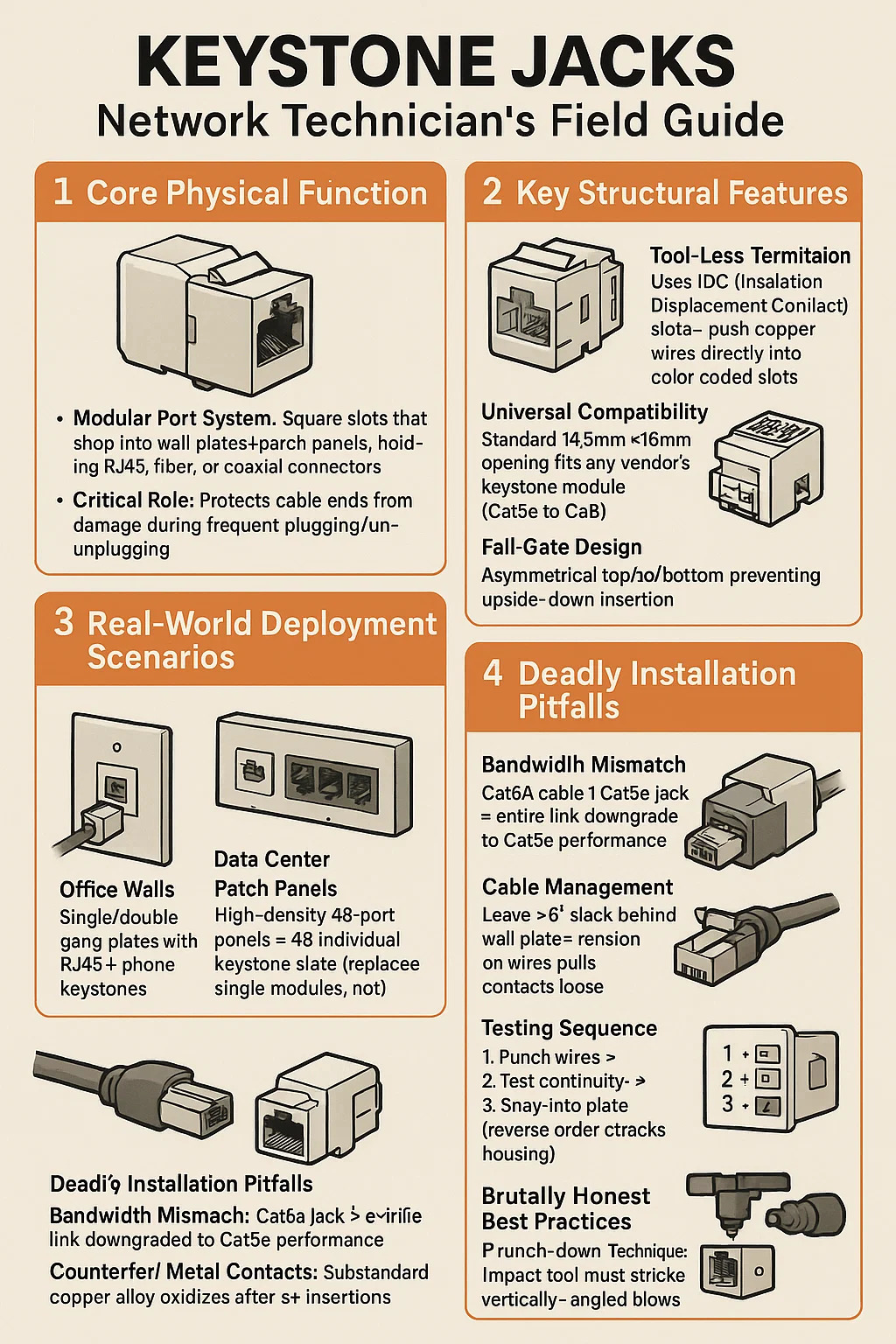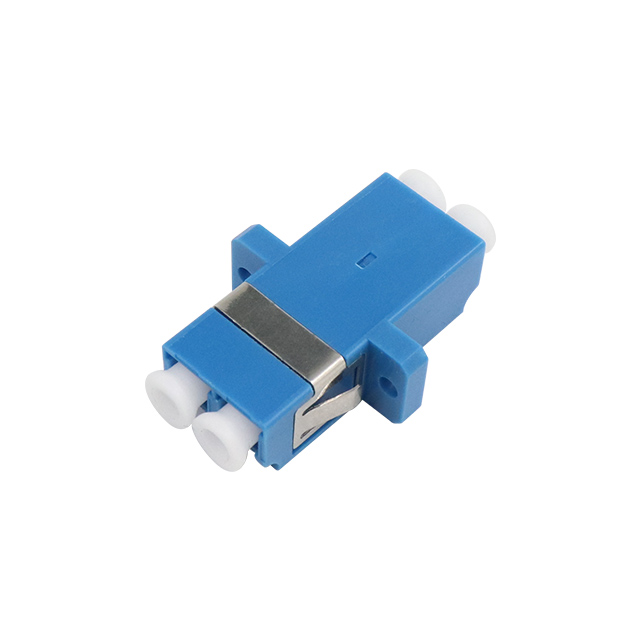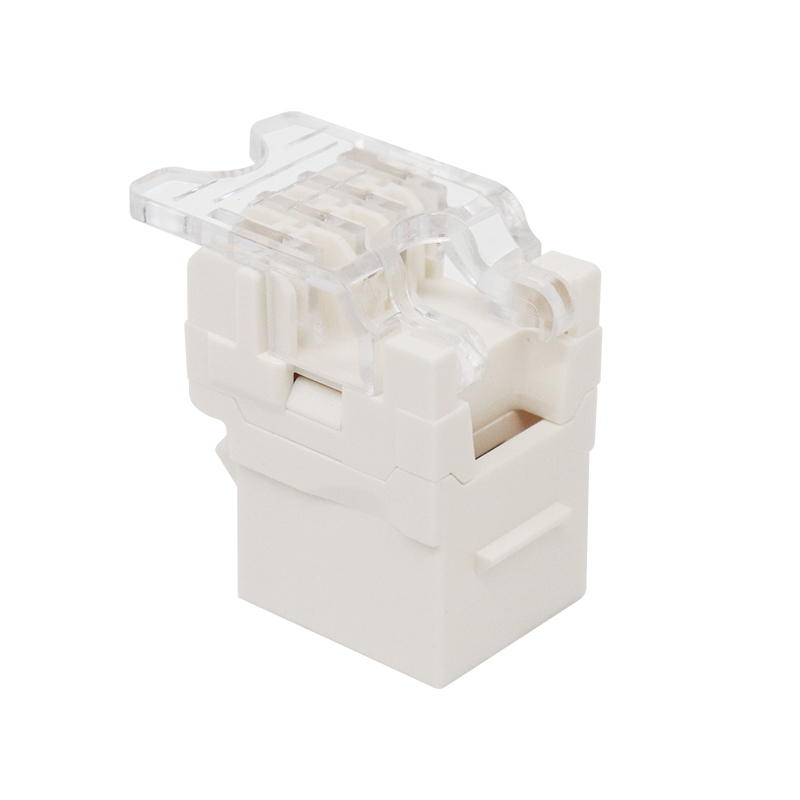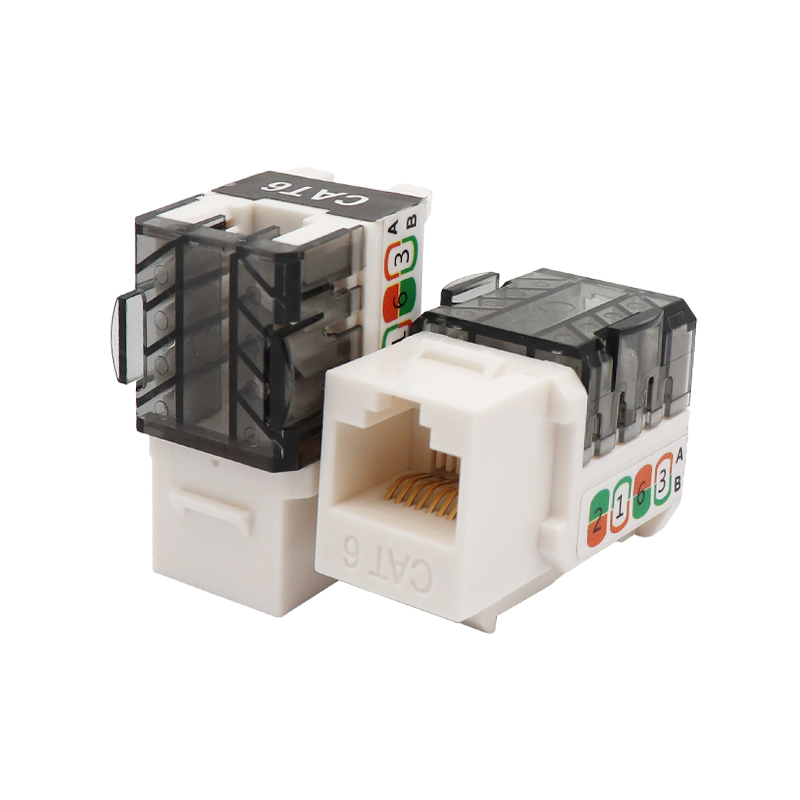What is a keystone jack in networking?
2025-10-13
Keystone Jacks: Network Technician's Field Guide
Content
1. Core Physical Function
Modular Port System: Square slots that snap into wall plates/patch panels, holding RJ45, fiber, or coaxial connectors. Converts in-wall cables to user-accessible ports.
Critical Role: Protects cable ends from damage during frequent plugging/unplugging.
2. Key Structural Features
Tool-Less Termination: Uses IDC (Insulation Displacement Contact) slots—push copper wires directly into color-coded slots; blades pierce insulation for contact.
Universal Compatibility: Standard 14.5mm×16mm opening fits any vendor’s keystone module (Cat5e to Cat8).
Fail-Safe Design:
Asymmetrical top/bottom prevents upside-down insertion.
T568A/B wiring diagrams molded into housing.
3. Real-World Deployment Scenarios
Office Walls: Single/double gang plates with RJ45 + phone keystones (data/voice separation).
Data Center Patch Panels: High-density 48-port panels = 48 individual keystone slots (replace single modules, not whole panel).
Hybrid Environments: Control room panels mix RJ45 + LC fiber + HDMI keystones (e.g., CCTV monitoring stations).
4. Deadly Installation Pitfalls
Bandwidth Mismatch: Cat6A cable + Cat5e jack = entire link downgraded to Cat5e performance.
Counterfeit Metal Contacts: Substandard copper alloy oxidizes after 5+ insertions → packet loss (demand phosphor bronze contacts).
Shielding Ignorance: Using shielded jacks with UTP cable creates ground loops (hum/interference).
5. Brutally Honest Best Practices
Punch-Down Technique: Impact tool must strike vertically—angled blows nick conductors.
Cable Management: Leave ≥6" slack behind wall plate—tension on wires pulls contacts loose.
Testing Sequence:
Punch wires → 2. Test continuity → 3. Snap into plate (reverse order cracks housing).

cooperate with PUXIN?
Contact us to find out how our products can transform your business and
take it to the next level.
















